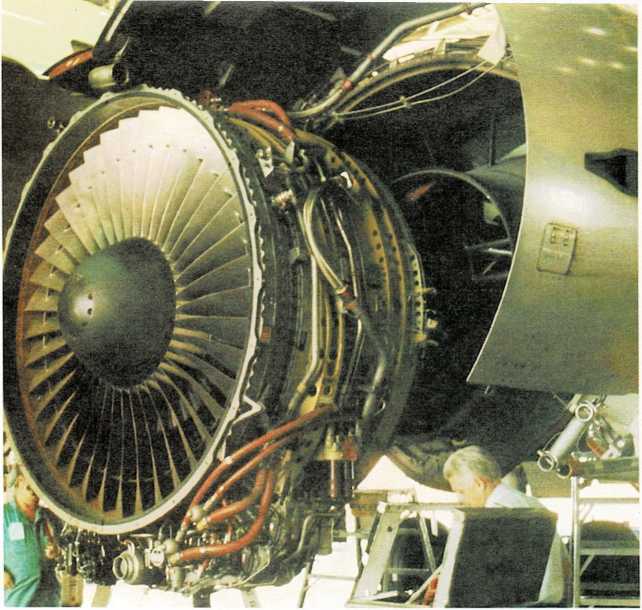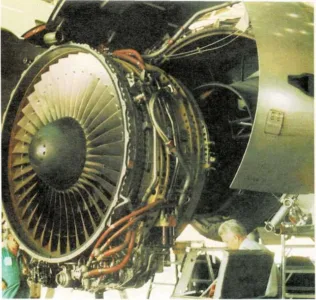
An airplane pushed by gas
Have you ever wondered why certain kinds of airplanes are called jet
planes? The word jet means a stream of something that’s shot out of an
opening. And that’s how a jet plane flies—by squirting out jets of
burning gas.
Instead of propellers, jet planes have engines with spinning parts
inside. These fanlike parts scoop in tremendous amounts of air and
squeeze the air into a closed space.
Squeezing the air makes it hot. So when the fuel is squirted in, the hot
fuel-and-air mixture begins to burn. The hot, burning gases can escape
in only one direction—out the back of the engine. As they rush

This jet engine is having a checkup. Airplane mechanics will make
repairs and test the engine to be sure it runs smoothly.
backward, they push the plane forward and make it fly.
Many jet planes fly almost as fast as sound travels. And some of the
newest jets are supersonic (soo puhr SAHN ihk)—they fly faster than
sound. They can fly at 1,550 miles (2,494 kilometers) per hour—more
than twice as fast as an ordinary jet.
But the bigger and faster the jet planes get, the more room they need to
take off and land. So as jet planes get larger, many airports have to be
made larger, too.
And, of course, jet planes make noise and fumes. So when new airports
are built, they need to be planned carefully. The planners try to make
sure that big planes landing and taking off are not a danger or a bother
to people who live or work near the airport.

